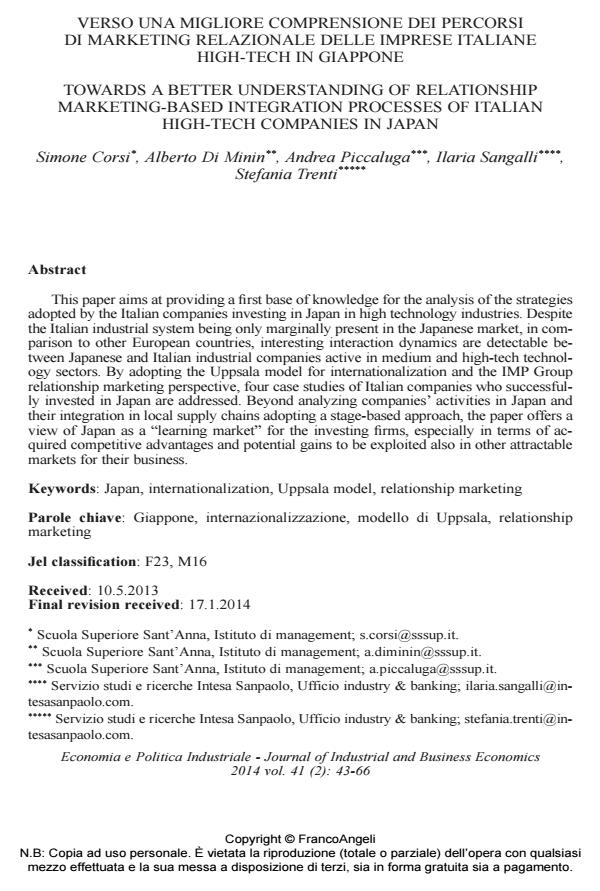Verso una migliore comprensione dei percorsi di marketing relazionale delle imprese italiane high-tech in Giappone
Journal title ECONOMIA E POLITICA INDUSTRIALE
Author/s Simone Corsi, Alberto Di Minin, Andrea Piccaluga, Ilaria Sangalli, Stefania Trenti
Publishing Year 2014 Issue 2014/2
Language Italian Pages 24 P. 43-66 File size 107 KB
DOI 10.3280/POLI2014-002003
DOI is like a bar code for intellectual property: to have more infomation
click here
Below, you can see the article first page
If you want to buy this article in PDF format, you can do it, following the instructions to buy download credits

FrancoAngeli is member of Publishers International Linking Association, Inc (PILA), a not-for-profit association which run the CrossRef service enabling links to and from online scholarly content.
This paper aims at providing a first base of knowledge for the analysis of the strategies adopted by the Italian companies investing in Japan in high technology industries. Despite the Italian industrial system being only marginally present in the Japanese market, in comparison to other European countries, interesting interaction dynamics are detectable between Japanese and Italian industrial companies active in medium and high-tech technology sectors. By adopting the Uppsala model for internationalization and the IMP Group relationship marketing perspective, four case studies of Italian companies who successfully invested in Japan are addressed. Beyond analyzing companies’ activities in Japan and their integration in local supply chains adopting a stage-based approach, the paper offers a view of Japan as a "learning market" for the investing firms, especially in terms of acquired competitive advantages and potential gains to be exploited also in other attractable markets for their business.
Keywords: Japan, internationalization, Uppsala model, relationship marketing
Jel codes: F23, M16
Simone Corsi, Alberto Di Minin, Andrea Piccaluga, Ilaria Sangalli, Stefania Trenti, Verso una migliore comprensione dei percorsi di marketing relazionale delle imprese italiane high-tech in Giappone in "ECONOMIA E POLITICA INDUSTRIALE " 2/2014, pp 43-66, DOI: 10.3280/POLI2014-002003